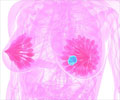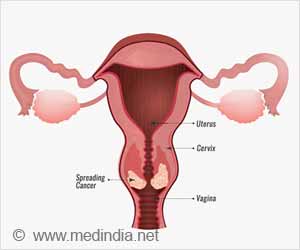The purine-binding protein signature, discovered in Triple Negative Breast Cancer, holds the potential to play a significant role in clinical trials.

Kinase inhibitor pulldown assay identifies a chemotherapy response signature in triple negative breast cancer based on purine-binding proteins
Go to source). The new approach is set to become a valuable tool for physicians, enabling them to make treatment decisions //tailored to each individual with a higher likelihood of success. The study appears in Cancer Research Communications, a journal of the American Association for Cancer Research.
‘The purine binding signature holds the potential to identify a specific subgroup of triple-negative breast cancer patients who may benefit from investigational therapy. #breastcancer #breastcancertreatment’





“Multiple research innovations in cancer diagnostics are on display in this work,” said co-corresponding author Dr. Matthew Ellis, member of the Lester and Sue Smith Breast Center and the Dan L Duncan Comprehensive Cancer at Baylor and also senior vice president of early oncology and oncology R&D at AstraZeneca.
Exploring the Kinase Inhibitor Pulldown Assay (KIPA) in Triple Negative Breast Cancer
The researchers used a laboratory assay called Kinase Inhibitor Pulldown Assay, or KIPA, to search for proteins they could target to control tumor growth. They searched for these proteins in 43 frozen tumor biopsies that were part of the previous Clinical Proteomic Tumor Analysis Consortium (CPTAC)-TNBC study.“Our initial goal was to find new ways to control TNBC growth, specifically by identifying and then inhibiting enzymes called kinases produced by the tumor to assist on its growth,” said co-corresponding author Dr. Meenakshi Anurag, assistant professor of medicine at the Lester and Sue Smith Breast Center at Baylor. “Although our search for such kinases did not produce valuable candidates, it unexpectedly revealed an opportunity to improve the success of chemotherapy.”
KIPA works by coating tiny beads with selective kinase inhibitors, then breaking down the cells in the biopsy samples and mixing them with the beads. Each kinase binds to its specific inhibitor, effctively separating it from other cell components, though some kinases can bind to multiple inhibitors. Then, the researchers collect and wash the beads, obtain the kinases and use mass spectrometry to identify each one of them.
Purine-Binding Proteins: A Promising Signature for Predicting Chemotherapy Sensitivity
“This approach did not reveal kinases we could potentially target to control these tumors’ growth; however, the assay captured seven non-kinase proteins, specifically purine-binding proteins, that were enriched in tumors that completely responded to treatment,” said first author Junkai Wang, a graduate student working in the Ellis lab. “Further analyses showed that this seven-purine-binding protein signature predicted chemotherapy sensitivity and favorable clinical outcomes.”“Although originally KIPA was developed for the accurate quantification of druggable kinases, this paper demonstrates that its clinical utility extends beyond kinase quantification. With more clinical sample analysis, there is a great possibility that we will be able to identify additional signatures for many therapeutic strategies,” said co-corresponding author Dr. Beom-Jun Kim, member of the Lester and Sue Smith Breast Center and the Dan L Duncan Comprehensive Cancer at Baylor and also associate director of diagnostic proteomics at AstraZeneca.
“We are excited about these findings, which we have validated in multiple TNBC cohorts,” Anurag said. “In addition, KIPA offers other advantages: it produces results in a time-efficient manner and requires a much smaller tumor sample than other methods.”
Advertisement
- Kinase inhibitor pulldown assay identifies a chemotherapy response signature in triple negative breast cancer based on purine-binding proteins - (https://aacrjournals.org/cancerrescommun/article/doi/10.1158/2767-9764.CRC-22-0501/727828/Kinase-inhibitor-pulldown-assay-identifies-a)















